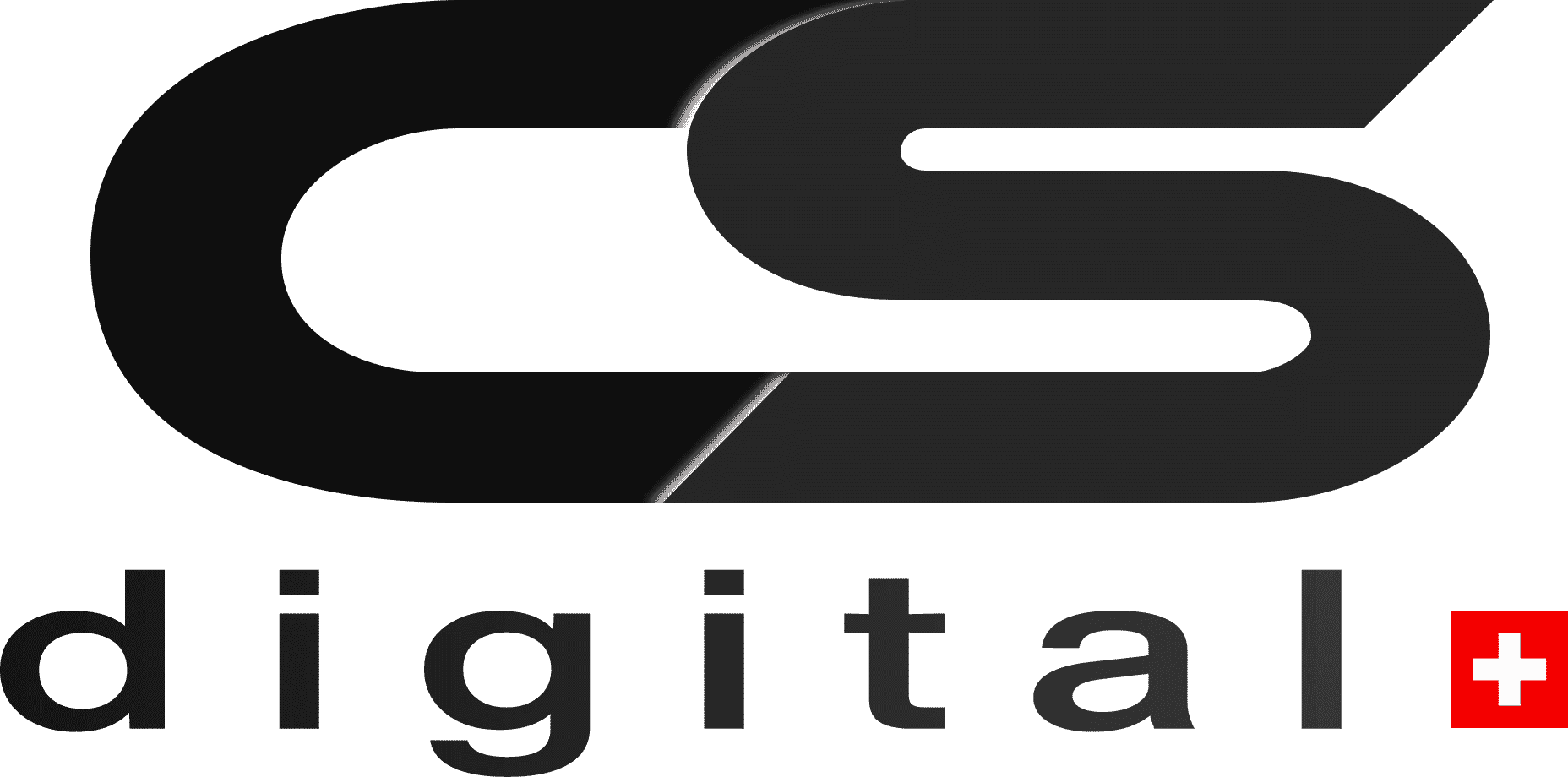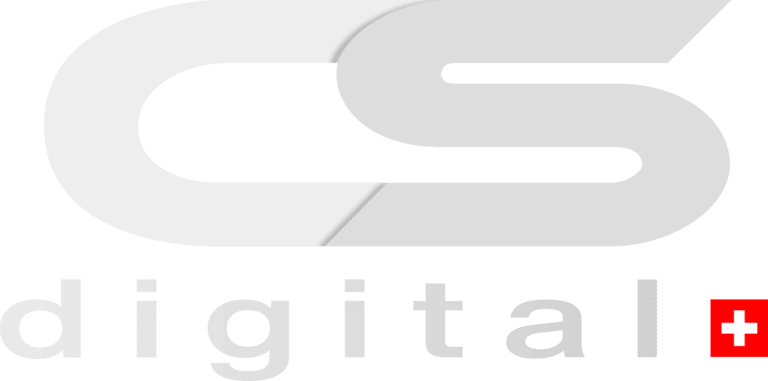It can sometimes seem as if image optimization for Google search engine optimization is limited to adding “alt” tags to site images. The truth is, there’s a lot more you can do to really improve image SEO. Moreover, if we analyze Google’s recent advances in Machine Learning, we understand that Google is now able to determine the content of images without even reading the content of the “alt” tags.
So how can we optimize image referencing for Google in 2022? And by the way, is it really possible to influence Google’s algorithm for images? We’ll try to answer these questions in this article.
Why are images so important?
Nobody wants to read a long article without a single image. Without images, content seems long and boring. Just like web design in general, using visual content, graphics and other visual aids in your content helps it stand out.
Images play a very important role in getting users to engage with your site’s content, but also in making your site’s content shareable and making other sites want to link to your content.
So, to put it as simply and directly as possible: if you have the ability (time/resources) to do so, add images to all your content where relevant to help it stand out. Without these images, the chances of your visitors reading an article to the end are slim to none. And what’s more, search engines such as Google consider these images as an addition to the user experience, so images help your SEO.
What is image SEO?
Image SEO is the process of optimizing visual content to make websites more attractive (both to search engines and to site visitors).
Interestingly, after February 2018, Google changed its image search interface by removing the “Show Image” button following a lawsuit with Getty Images. From then on, users wishing to see the image had to visit the relevant website. And the result was very positive for the websites, as the traffic generated by the images subsequently increased by an average of almost 37%.
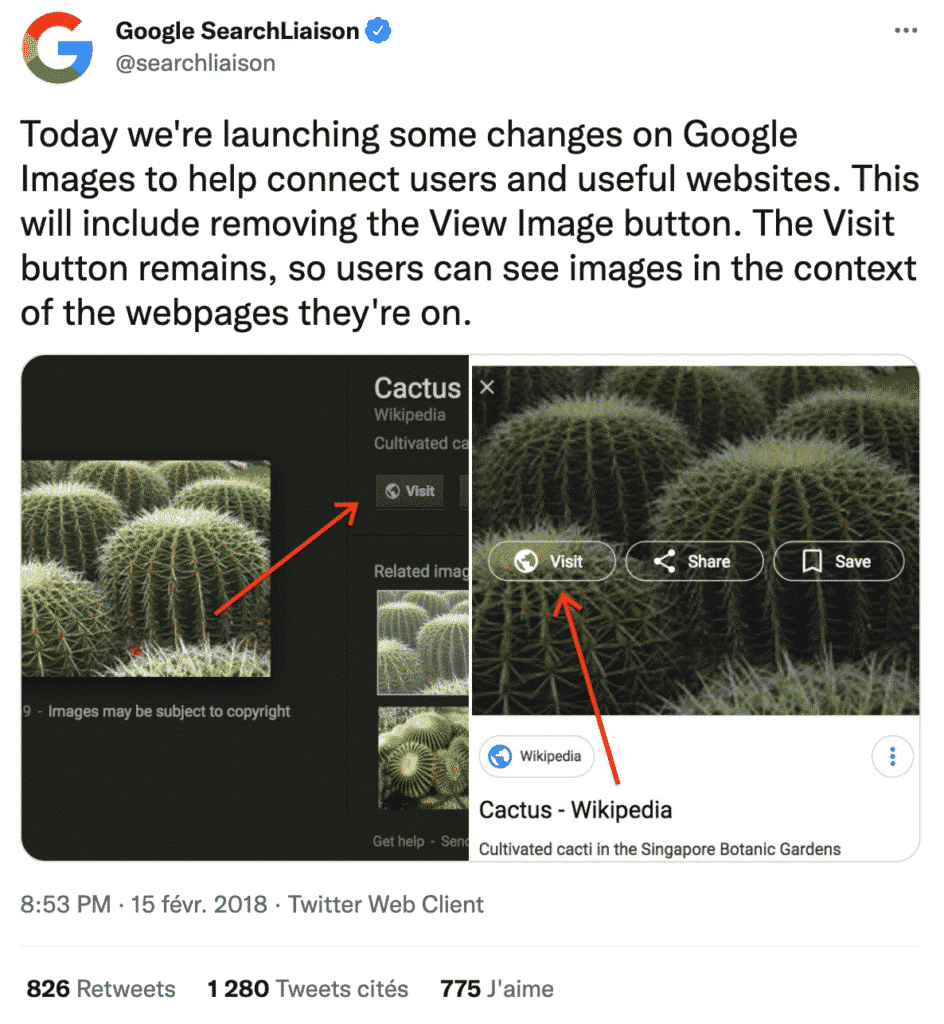
So without further ado, let’s take a look at how you can optimize your images to generate more traffic from image search engines like Google.
Key steps for image SEO in 2022
Name all image files correctly
Google has always been consistent in its recommendations concerning image file names: this information is read and clearly used by Google to interpret the content and relevance of an image. So, for example, an image name such as “montre-de-luxe-suisse.jpg” is much better than “IMG00017.jpg” from an SEO point of view.
It is therefore strongly recommended to avoid importing or copying and pasting images from Word documents (as this results in a title such as word-image-1.jpg), which is obviously undesirable in view of Google’s advice.
Earlier in this article, we noted that Google has made great strides in its search engine, and can now understand the content of an image even without additional hints. And even if this is absolutely true, there’s still a certain level of uncertainty in Google’s understanding of image content. For example, Google’s artificial intelligence is only able to determine with 53% certainty that the image below is a cookie (i.e. about one chance in two).
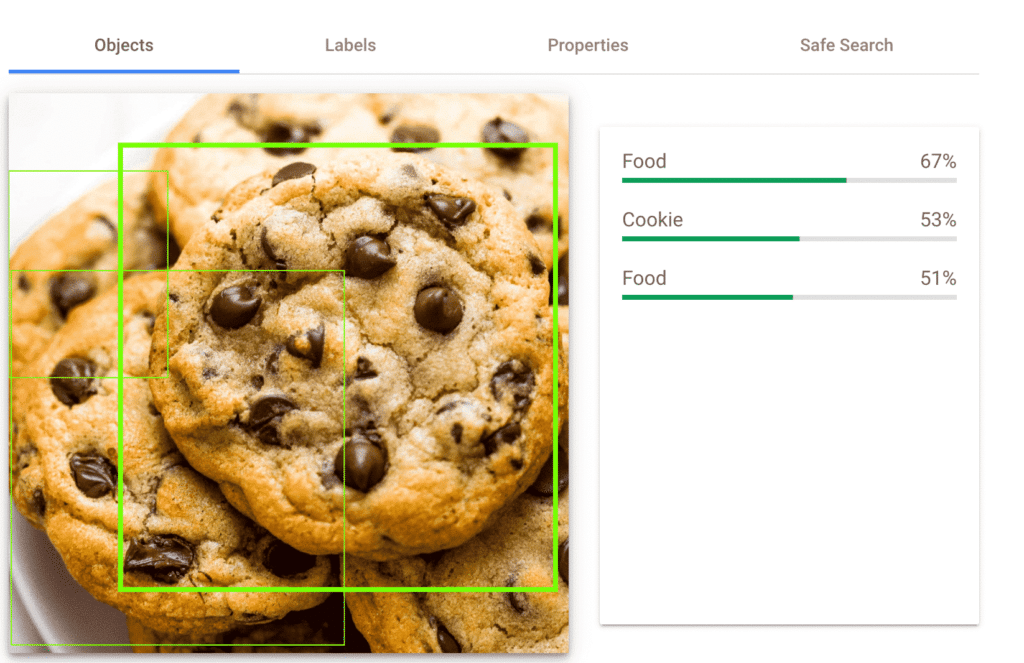
And again, it should be noted that the above results are obtained using a very clear image. So you can imagine what the results might be like with images less conventional and less explicit than this one.
All in all, even if artificial intelligence is becoming more and more important in Google’s search results, the indications you provide (and in particular the name of the image file) remain crucial criteria in your SEO approach to help Google fully understand the content of your site.
Note: whatever you do, don’t fill image file names with keywords. For example, the image above could be called “cookie-pepites-chocolat.jpg”. But titling it “cookie-pepites-chocolat-cookies-recette-cuisine.jpg” just to get extra keywords is considered bad practice and clearly discouraged by Google.
Using alt tags and captions effectively
What are “alt” tags?
Alt text”, also known as the “alt” tag, is short for “alternative text”, and is used to describe an image on a web page. Although visible when displaying the HTML source of a page, it is not intended to be visible on the page where the image is displayed. It serves several purposes, including and mainly to help screen-reading tools describe images to your visually impaired reader. And, of course, search engines also use it to better explore and understand websites, making it a central element of SEO.
Google’s instructions tell us that Google actually uses alternative text with computer vision algorithms and page content to understand what the image is about. What’s more, their advice when choosing alternative text to use for images on your site is always to create useful, information-rich content that uses keywords appropriately in the context of the web page they’re on. In short, the same principles apply as for image file names: avoid overuse and abuse of keywords, which will be considered spam.
How can you optimize the “alt” text of your images for better search engine optimization?
It’s easy to get lost and waste a lot of time trying to write the perfect alternative text for every image on your site. In reality, your alternative text only needs the following elements:
- Be relevant, correct, and written to be easily understood (and therefore for SEO).
- Be descriptive and specific
- Being relevant
Here’s a tip to speed up the process. Whenever you write alternative text, simply describe what’s in the image by preceding your description with “this is an image/photograph of …”. This will automatically push you to write something relevant and not exclusively keyword-driven. At the same time, by following this approach, the appropriate keywords will naturally form part of the alt text of all your images.
The only major exception to this rule is product images and photos. In this case, it can be useful to add information such as the serial number, or the product identification number if your customers can search for products using this information.
Add captions to your images
Although they are not essential in cases where they add nothing to your image, or if your image is purely decorative, captions can be used, for example, to cite the source of an image, or to provide additional precision to the content of your image, which will also be read by the search engine.
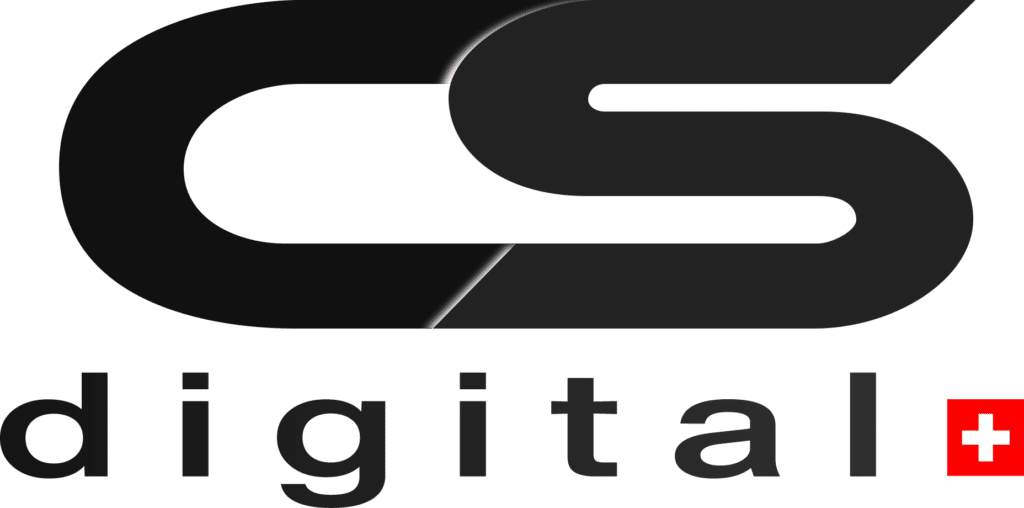
Google has officially declared that they do use captions in addition to image titles, making them interesting from an SEO point of view. It is therefore advisable, wherever possible, to ensure that images are placed close to relevant text and on pages dealing with the subject of the image. However, as an example, you’ll notice that we make very little use of image captions in most of our content, because the text surrounding each image we insert is already strongly linked to the image – in which case the caption adds very little interest.
Reduce the weight of your images to optimize loading time
Google has documented in detail how website owners should optimize their images so that they can use images without affecting page load times. The main point being that optimization, even if it means sacrificing visual quality, is often well worth the effort, as it can have a significant impact on loading times. Website loading time has thus become a key SEO criterion, and must be highly optimized.
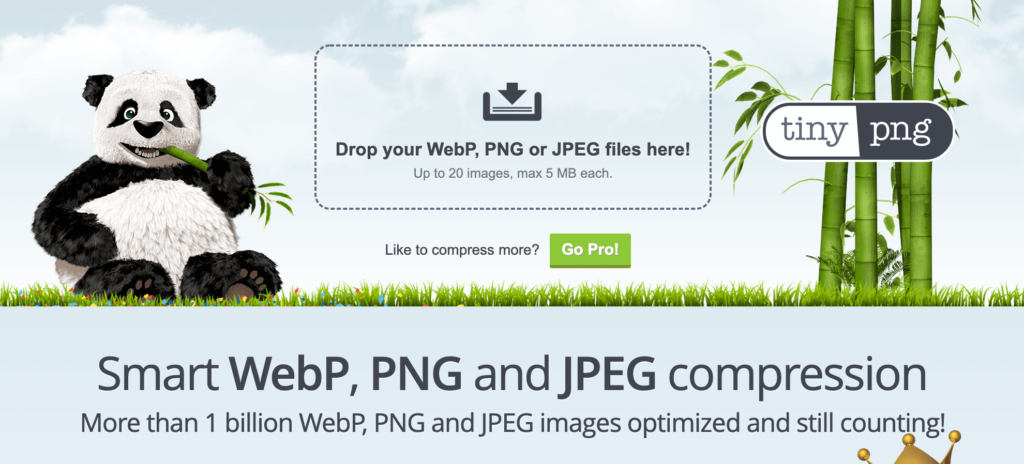
There are many tools available to optimize the weight of your images, with effective levels of compression that are practically invisible to the human eye. If we had to recommend just one, we’d recommend the TinyPNG site, which lets you compress your images directly. It is also possible to integrate this solution directly with your website, to automate this process.
Create an image sitemap for faster indexing
Sitemaps are a key SEO tool, making it easier for search engines to discover the content of your website. So a sitemap of your site’s images gives you the opportunity to present Google with information about your images, and even index images that would otherwise remain undiscovered.
Various tags can be used to create an image sitemap:
| Beacon | Mandatory | Description |
|---|---|---|
| Yes | Contains all information on a single image. Each | |
| Yes | Image URL In some cases, the image URL may not be on the same domain as your main site. This poses no problem, provided that both domains have been validated in Search Console. If, for example, you use a content delivery network such as Google Sites to host your images, make sure you have validated this site in Search Console. In addition, make sure that your robots. txt file does not prevent crawling of the content you wish to index. | |
| Optional | Image caption. | |
| Optional | Geographical location of image. Example: | |
| Optional | Image title. | |
| Optional | URL referring to the image license. If you wish, you can use image metadata. |
If you’re using a CMS such as WordPress, for example, there are a number of SEO modules that will enable you to set this image sitemap automatically.
Use a CDN (Content Delivery Network) to distribute images
The origin server that hosts all the data and content needed to present visitors with complete web pages isn’t always close to each of your visitors (especially if your site has a global reach). This is where content delivery networks (CDNs) come in. A content delivery network refers to a worldwide network of servers that work together to deliver content to visitors wherever they are, as quickly as possible.
Suppose your server is in London and someone visits your site in Australia or New York – the content won’t be delivered from London (because that would be inefficient). All cacheable content, including images, would instead be served from the CDN location closest to a visitor landing on your site.
There are many CDN solutions on the market, such as..:
For our part, we use Cloudflare for most of our customers, largely for their suite of products and services to drastically improve the loading efficiency of your content and site. Even if it’s a highly technical criterion, site loading time is a central SEO criterion and should not be neglected.
Apply an appropriate schema markup
The creation of a “schema markup” will be the subject of a dedicated article, and would require much more content than this simple article to be understood in depth. However, it’s important to understand that it’s possible to add data to your content in order to make Google understand precisely what your content is, and is therefore a considerable asset in an advanced SEO strategy.
For example, if you write cupcake recipes, you can tell Google that your content is a recipe, and your content will then appear as follows on Google:

Conclusion – keep optimizing images for the long term
Image SEO works on the same principle as traditional SEO: it’s a long-term activity, for which you’ll need to produce relevant, quality content for your users.
Of course, the visual quality of your images will also play a major role in the quality perceived by your users. A few important rules for your images to ensure quality SEO:
- Avoid low-quality generic images at all costs (sites such as Unsplash or Pexels, for example, provide good-quality royalty-free images).
- Make sure that every image you use on your site contributes to the user experience of a real human being visiting your site.
Of course, it’s a complex subject, which is why we support all our customers in their SEO challenges, for all their content (text and images). Don’t hesitate to consult our SEO services, or contact us to discuss your needs and find the best solution for you.
